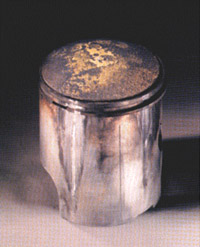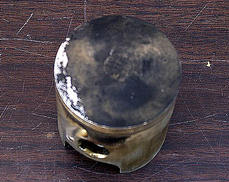2-Stroke Lubrication

Bel-Ray’s Lubricant Advisor: The Most Powerful Tool in Your Toolbox
March 2, 2015
Winter Storage Recommendations
September 2, 2016It has been said that in order to make great coffee, you need to start with great water. A similar analogy can be made for 2-stroke lubricating oils. The base oil used in 2-stroke oil is often the most important performance enhancer and protector for a 2-stroke engine. The additives are important, but if you start with an inferior product, you end up with an inferior product. So why use a lubricant that lacks the necessary properties to fully protect your engine?
The following is an explanation of the types of lubricating base fluids as well as a recommendation for selecting the proper type of lubricant for a 2-stroke engine.
To start, there are five basic types of lubricant base fluids you will typically find in most types of oil. They are known by the designations of group one through group five oils (I, II, III, IV, V).
- Group I oils are the least refined and the most basic types of mineral oils extracted from crude oil. These oils usually contain a high level of aromatic and volatile compounds, which dilute the true lubricating oil.
- Group II oils are more refined and contain less of the impurities found in Group I oils.
- Group III oils are the most highly refined mineral oils and contain very little impurities. These oils are sometimes legally termed as synthetic base oils because of the exceptionally refined nature of them, but are still technically mineral base oils.
- Group IV oils are Polyalphaolefin (PAO) material, which is created through a chemical reaction. PAO is a type of polymer that is highly stable due to the uniform molecules. This uniformity helps it to retain its molecular structure through vast temperature differences and shearing conditions.
- Group V oils are synthetic esters that are also created through a chemical reaction. These substances generally have very high thermal stability as well as a high solubility with many substances. This solubility property makes the oils very proficient at cleaning the metal surfaces inside an engine as it dissolves the deposits and carries them to the oil filter.
The differences between a 2-stroke and a 4-stroke engine are significant, and those differences demand different properties from the lubricant. Lubrication of the 2-stroke system requires a fluid that will form a tenacious film that will not be evaporated and will create a protective layer of oil over the entire piston surface. Unlike a 4-stroke engine, there is no oil submersion in a 2-stroke machine, so the film strength is one of the more important properties of a 2-stroke oil. It needs to withstand the heat and combustion of the fuel without burning and also needs to be able to clean the parts that may have carbon deposits or gummy residues left over from poor combustion or less effective lubricants. Since the thin film of lubricant is the only thing to stop the piston rings from grinding into the cylinder walls, these lubricants must be capable of protecting against high levels of pressure during the stroke of the piston.

Certain 2-stroke lubricants are diluted with solvents to make them “clean burning” and provide “deposit control.” This is usually done to compensate for the lack of performance in the base fluid used. Since solvents tend to be highly flammable, the presence of them in the oil will also alter the combustion within the chamber. These solvents will alter the octane of the fuel and act as an impurity, causing detonation. Engines are designed to combust fuel, not the fuel and the extra flammables you’ll find in low quality lubricant products. The added combustion of part of the lubricant can result in a poor running engine or even engine failure.

Fig. 2: Piston with carbon deposits and
burning
For the greatest balance of performance and protection, a fully synthetic 100% ester based lubricant is the best choice for a modern 2-cycle engine. This 100% synthetic ester base fluid gives a high level of detergency to ensure the elimination of carbon deposits and deter the formation of new performance-robbing deposits.
Ester based fluids will withstand great amounts of heat and will not burn in the combustion chamber. Since they do not burn, the emissions are clear of soot and ash that are commonly found when using lower grade lubricants. These esters naturally adhere to metal surfaces and create a very tenacious film, so when the lubricant is brought onto the piston, it creates a film and spreads along the surface to protect the entire component. This film is difficult to eliminate, therefore, the engine will remain lubricated through very harsh conditions.
The additives included in 2-stroke oils are also very important when considering component protection. They enhance the intrinsic performance of the esters to complete this protection for an optimal running engine. Since the oil film on the parts is so complete and resolute, the corrosion protection is just as complete and resolute. When the film is spreading along the sides of the piston and coating the inside of the cylinder, it is stopping those surfaces from wearing down and leading to negative performance effects. So, the base oil is just as important as the additives it is carrying to the engine.
When it comes to 2-stroke oils, the base oil used is the most important aspect to consider. To gain maximum performance and protection for a machine, a 100% synthetic ester product is the best choice among current technologies and provides the most complete package for lubricating a 2-cycle engine. It won’t matter how great the additives of oil are if they never reach the components or the film is not sustained because of inferior base oil. Like the water carries the coffee flavors to your lips, the base oil carries protection to your engine.



